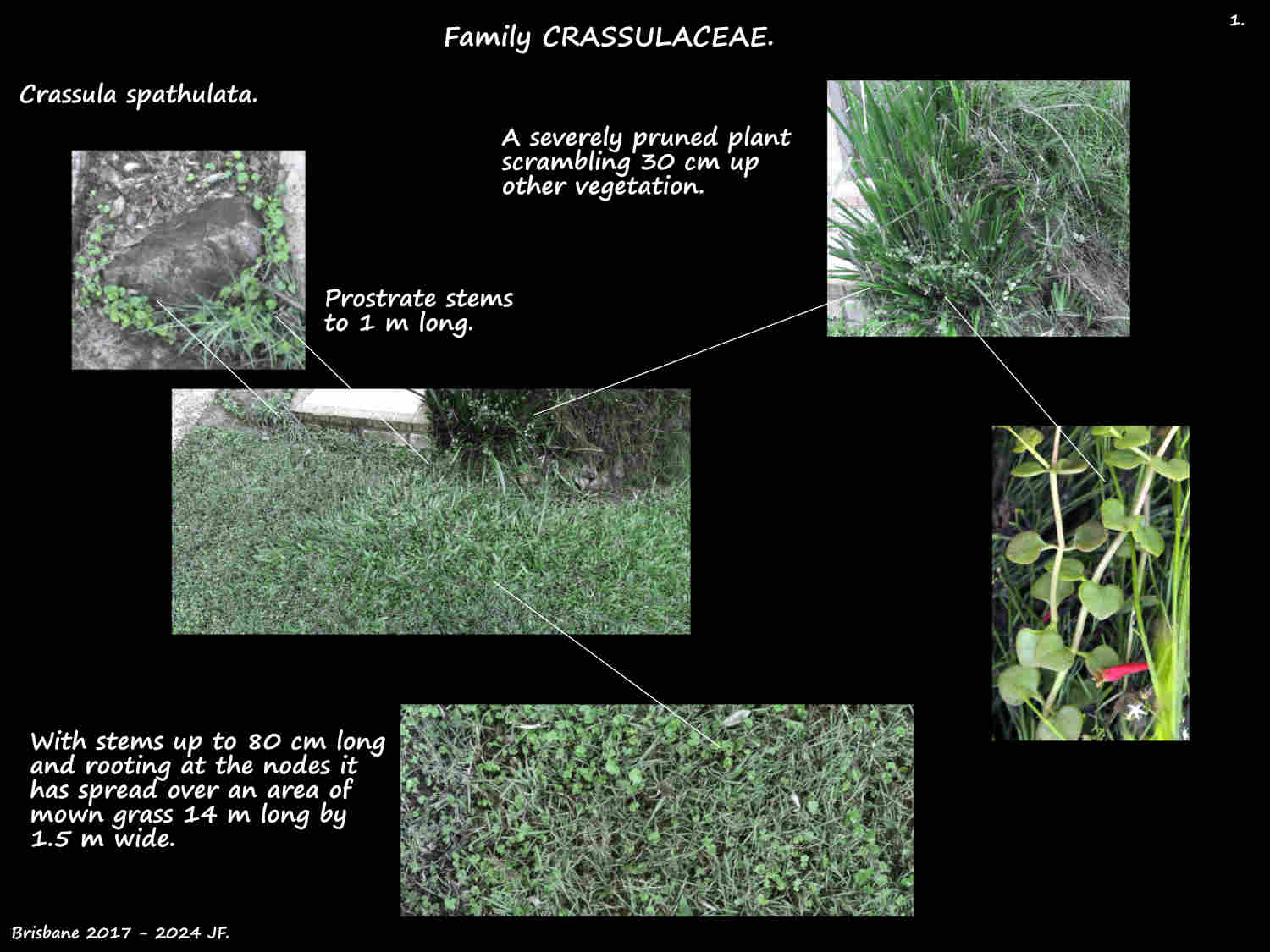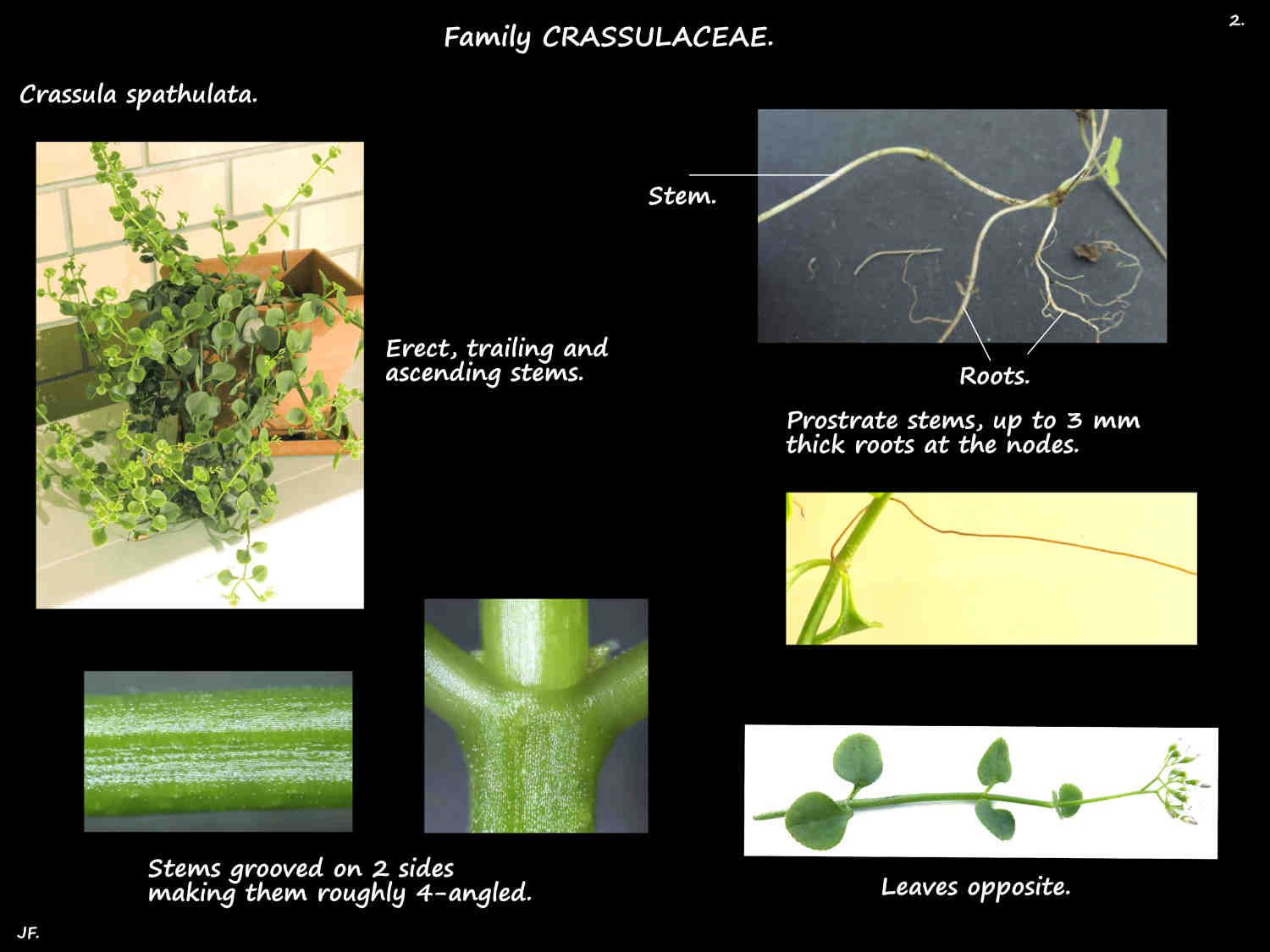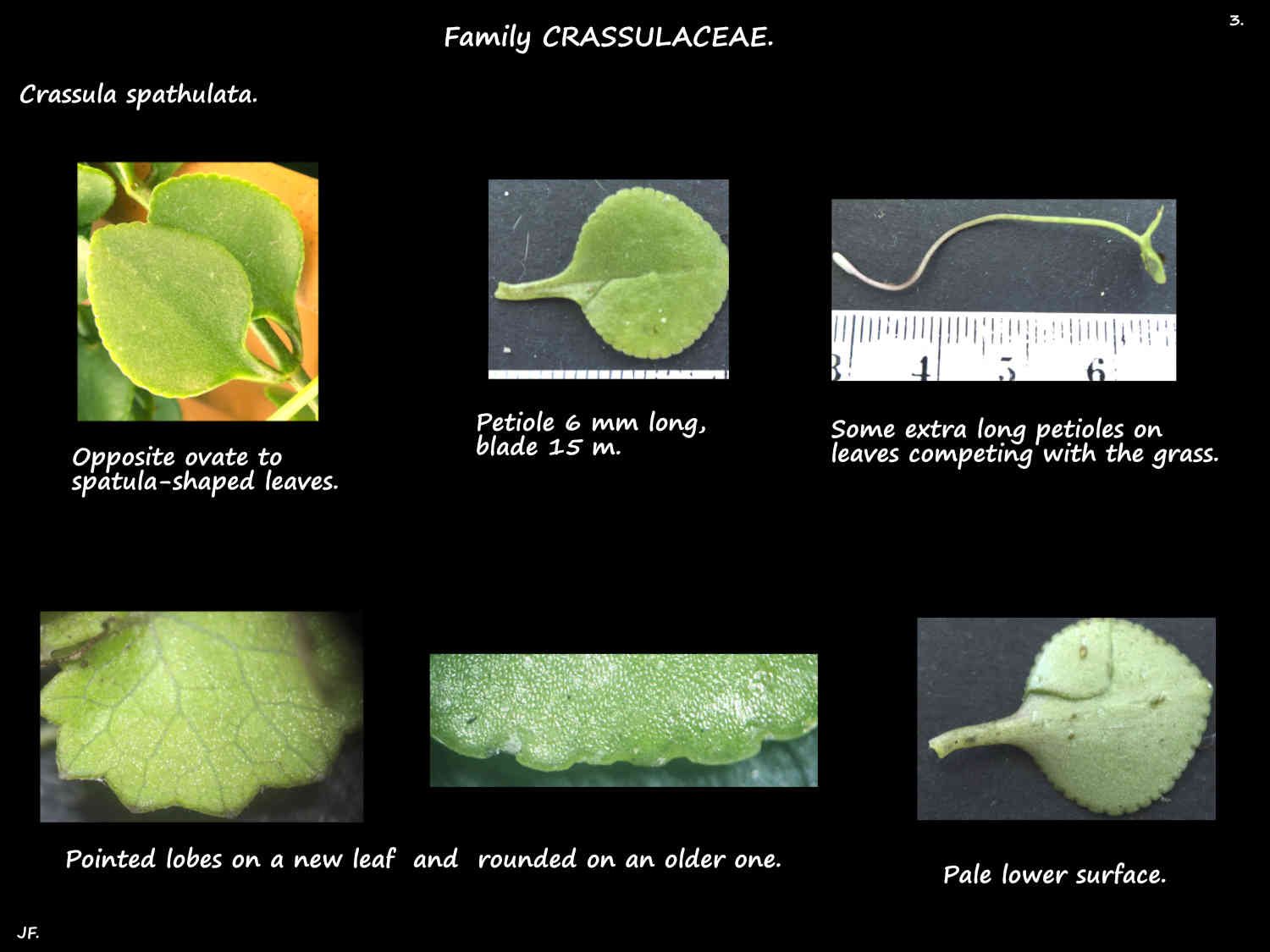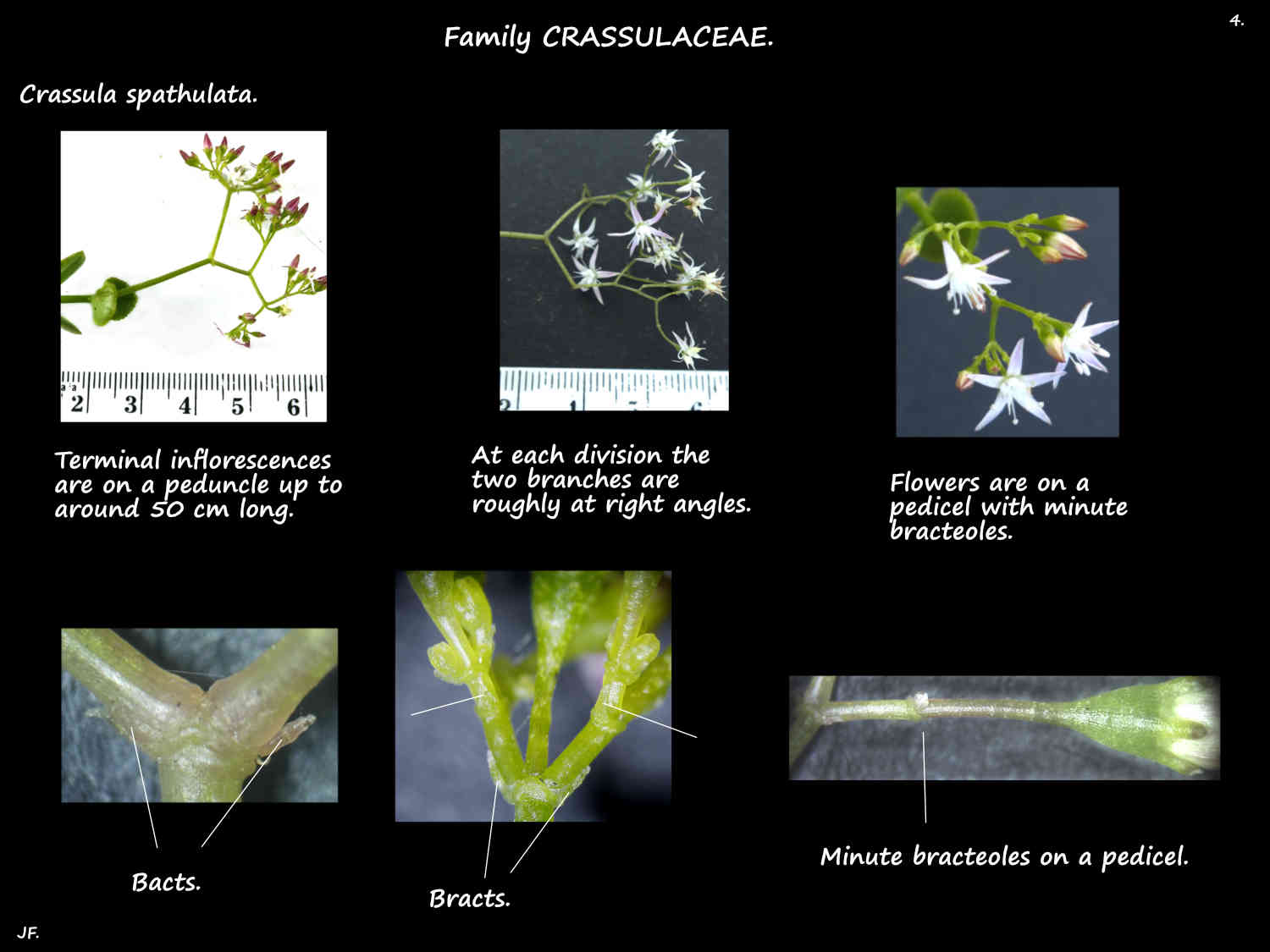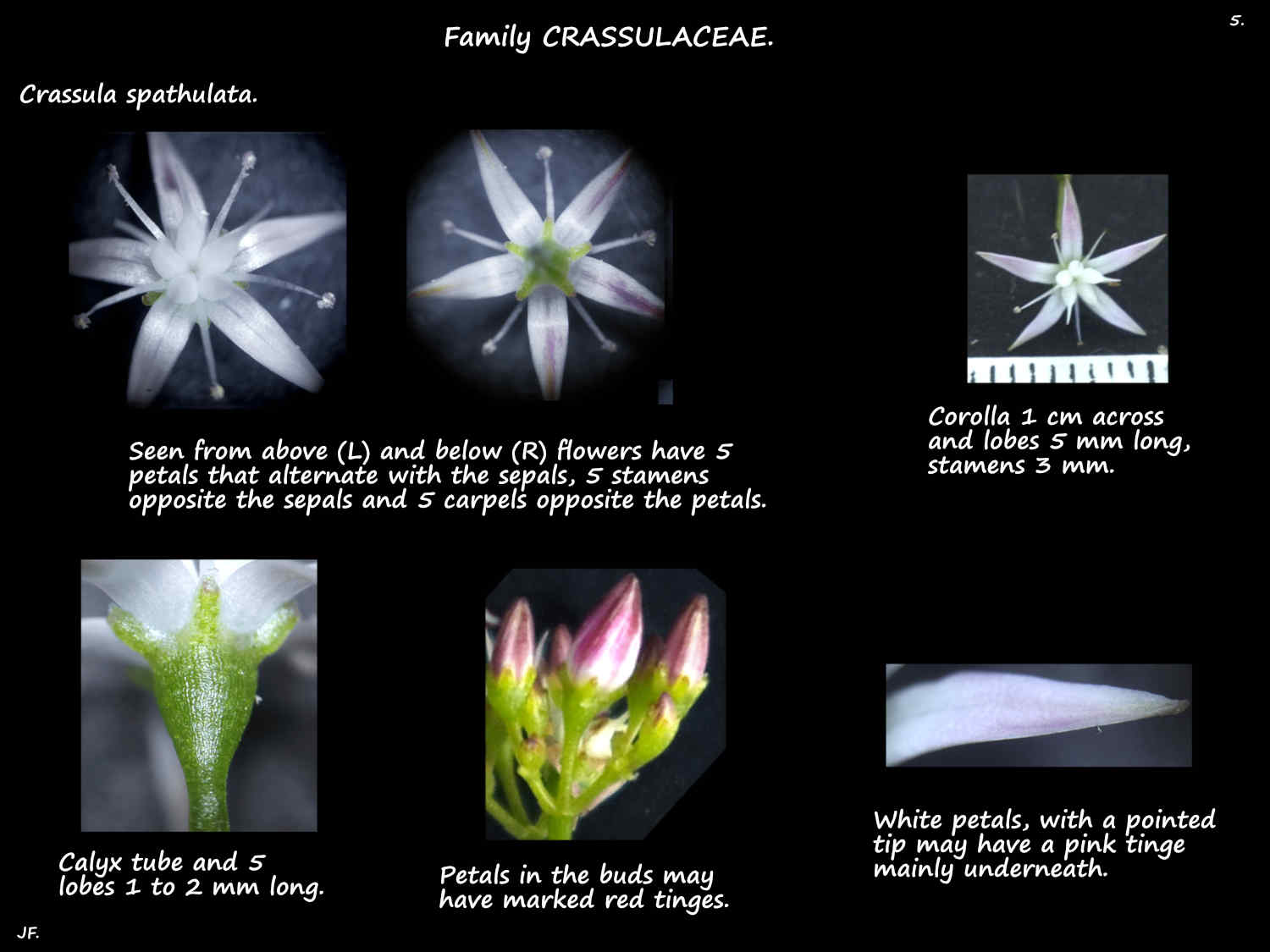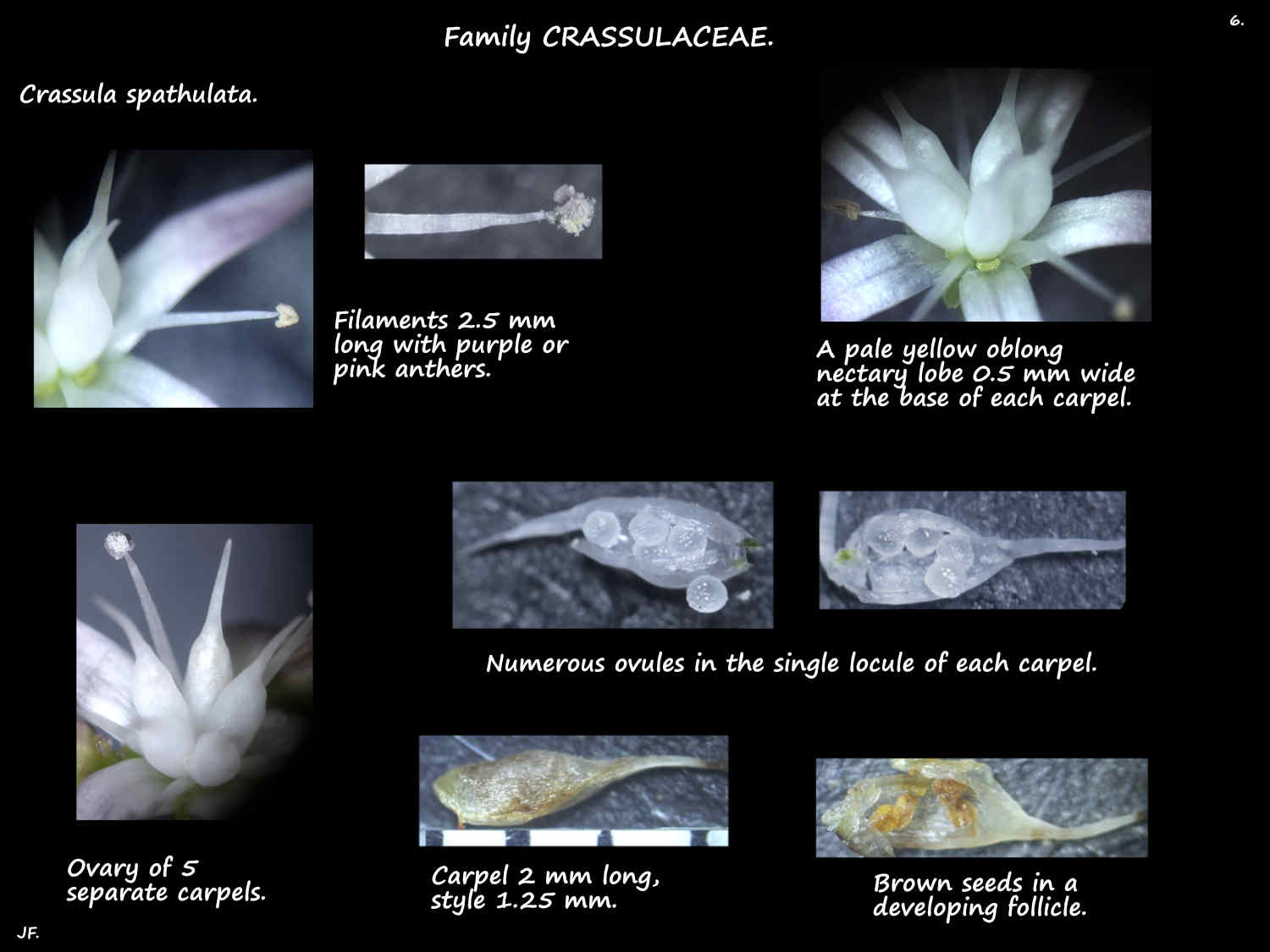Crassula spathulata.
Native to South Africa the Spathula-leaf Crassula is in Family Crassulaceae > Subfamily Crassuloideae.
Synonyms include Crassula cordata, C. cyclophylla, C. latispathulata, Crassula lucida and some Septimia species.
A fairly common garden plant it is naturalised in some areas of Australia.
The succulent perennial plants can form dense mats, be scrambling or erect around 30 or 40 cm high or trailing.
Prostrate slightly 4-angled stems, 2 to 3 mm thick can be up to 80 cm long.
The little-branched stems root at the nodes.
The opposite evergreen leaves are in 4 ranks only near the stem ends.
Pairs are close near the stem tip but are spread out towards the base.
Leaves are on a petiole from 2 to 7 (18) mm long.
The blades are spatula-shaped, ovate or almost round.
They are around 2.5 (1.5 to 3.5) cm long by 1.8 (1.5 to 2.5) cm wide.
The flat blades have a round or pointed tip and a wedge or slightly heart-shaped base.
Green to yellowish-green blades, often with a red edge, have small lobes or teeth.
There are whitish pores (hydathodes for water exchange) between the teeth.
Terminal inflorescences, on a peduncle up to 50 (30 to 70) cm long are a branched cluster of at least 10 small flowers.
At each division the branches, with small bracts at the base are roughly at right angles to each other.
Flowers are on a pedicel with a pair of minute bracteoles on it.
The star-shaped flowers are often seen all year.
The calyx, 1 to 2 mm long has 5 narrow triangular lobes.
The fleshy green (often with red) lobes have a central ridge or keel.
The around 1 cm wide corolla has 5 petals that are mainly free.
The widely spreading lobes are up to 5 mm long and 1 mm wide.
They are a narrow lance-shape with a slight keel and pointed tip.
Petals are white sometimes with a pink or red tinge.
The 5 stamens alternate with the petals and are opposite the sepals.
The 2.5 mm filaments have purple or pink anthers.
There is a nectary lobe (scale) at the base of each carpel.
The fleshy white to pale yellow horizontally oblong scales are around 0.5 mm wide (long) and 0.2 mm high.
The ovary has 5 mostly free carpels each with a few ovules in the single locule.
Fruit and seeds are rarely seen with propagation being by stems rooting.
There are some cultivars.
******
Also fairly common in gardens is the similar Crassula multicava or Fairy Crassula.
This is a mat-forming or scrambling succulent with stems under 40 cm long.
On petioles, the ovate to rounded blades are around 3.5 cm long.
The edges are smooth.
Branched terminal inflorescences are similar to C. spapthulata with small star-shaped flowers.
The 4 petals are white to cream with a red tinge at the tip.
J.F.

